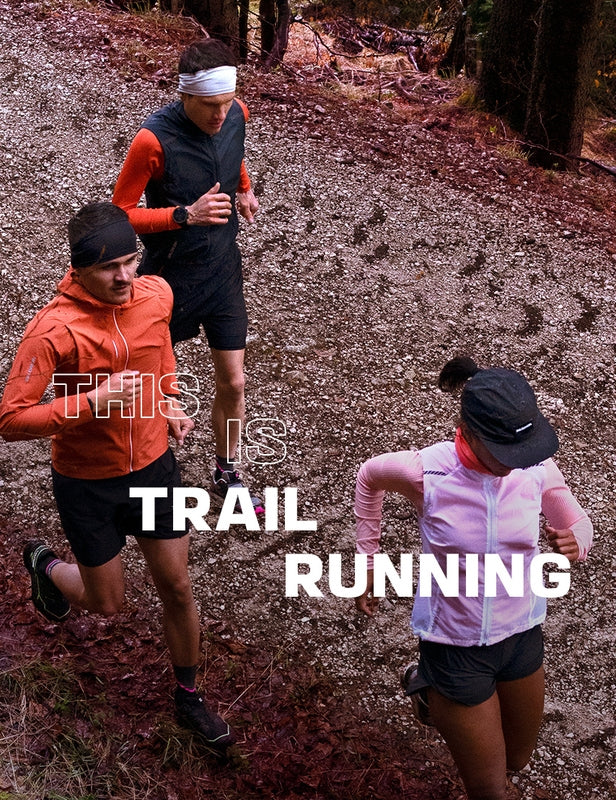HOW TO CHOOSE A RUNNING BACKPACK
Backpacks or hydration packs have become an essential item for trail running. However, they are hardly used at all in road running or marathons. Why is there this difference in usage? Here are our advices about how do you choose your running pack?
ROAD RUNNING
If you run on a track, your bag will stay trackside. There’s no reason to carry it!
For short, urban runs (less than 1 hour), you won’t need a pack either. A belt might be useful to carry some water or something to eat for longer runs or when running in the heat. --- Discover our selection of products : for HIM | for HER
More experienced urban trail runners should look for a 2 to 5 litre vest pack, this should be more than enough to insure you stay hydrated. --- Discover our selection of products : for HIM | for HER


TRAIL RUNNING ALONE
Trail runners need to be self-sufficient, more so than road runners. It’s not just a question of keeping hydrated but you also need to be conscious of your own safety. You’ll need to take supplies with you that are appropriate for your surroundings and environment. Some races require a mandatory list of supplies and gear for safety reasons.
HYDRATION VEST PACK OR MULTI-ACTIVITY BACKPACK ?
There are two main concepts when it comes to trail running packs: vest pack or backpack.
Hydration VEST PACKS are specifically designed for running. You wear them high up on your back and they fit snugly to limit movement while running. You should look for a vest pack that fits your shape perfectly. Choose the right size and the most ergonomic fit for your build.
--- Discover our selection of products : for HIM | for HER
A classic MULTI-ACTIVITY backpack is more versatile as it can be used for several sports. It’s a good choice if you are just starting trail running but they do tend to bounce around and move more than vest packs which can quickly become annoying at best and lead to serious chaffing issues at worst.
--- Discover our selection of products : for HIM | for HER
WHAT CAPACITY SHOULD MY PACK BE FOR THE DISTANCES I RUN?
The capacity of your bag depends on the length of your runs and, if you’re running competitively, and how spaced out the aid stations are.
If you have to be self-sufficient for:
- less than 1 hour: potentially a belt or a 2 litres vest pack
- 1 to 2 hours: 2 to 5 litres. --- Discover our selection of products : for HIM | for HER
- 3 hours plus: 6 to 10 litres. --- Discover our selection of products : for HIM | for HER
- Ultra trails, runs off the beaten track: 12 litres. --- Discover our selection of products : for HIM | for HER
OTHER FEATURES: AVAILABLE WHEN AND WHERE YOU NEED THEM
In a good trail running pack you should be able to reach all your kit without taking the pack off. If you want to be efficient on the trails, it helps to be able to easily grab your food, water, an extra layer of clothing, poles etc. The packs also have lots of handy stash pockets, it’s up to you what you put in them, but just make sure you don’t take anything that you won’t use.
HYDRATION
It’s really useful to store soft flasks of water in pockets on the front straps of your pack for easy hydration (see article on ‘hydration’). Many vests now have two dedicated flask pockets on the front of the pack for this purpose.
--- Discover our selection of products : for HIM | for HER

If you use a bladder, you must try and secure it well to reduce movement and sloshing. Many vest packs have a bladder pocket with hanger and cinch straps to help reduce this extra movement.
--- Discover our selection of products : for HIM | for HER
POCKETS
It’s best to organise your bag and have everything you carry close to hand so you don’t have to stop moving to grab a jacket, water or food.
POLE HOLDERS
If you like to run with trekking poles you should look for a pack which has a dedicated spot for securing them. A trekking pole quiver can also be used that attaches to some bags.




